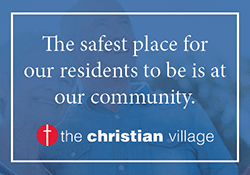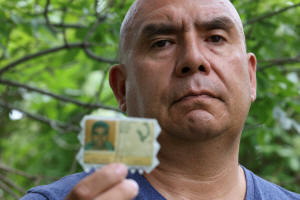Native Americans decry unmarked graves, untold history of boarding
schools
 Send a link to a friend
Send a link to a friend
 [June 22, 2021]
By Brad Brooks [June 22, 2021]
By Brad Brooks
(Reuters) - Clarence Smith was fresh off a
24-hour bus trip from his Blackfeet reservation in Montana to the
Flandreau Indian School in South Dakota in the late 1980s, where he was
sent by his family in the hope he would receive a better education.
"On one of the first days of class, a white social studies teacher stood
before our class and told us that we were lucky Columbus had found us,
because otherwise we would still be living in teepees," Smith said.
He gazed down at the pair of LA Lakers sneakers he got just for his new
school. If it weren't for Columbus, he would still be in moccasins, he
recalls thinking. Many years would pass before Smith began reeducating
himself, as he puts it - of finding his own history.
Flandreau, which declined comment, is one of at least 73 Native American
schools out of an original 367 still in operation across the United
States, according to researchers at the National Native American
Boarding School Healing Coalition.

One academic researcher contends that as many as 40,000 children may
have died in or because of their poor care at the U.S.-run schools, but
the federal government does not know or is unwilling to say how many
children even attended the schools, how many died in or went missing
from them, or even how many schools existed.
Among those who have called for a commission to fully investigate the
legacy of Indian boarding schools is Interior Secretary Deb Haaland, the
first Native American to serve as a Cabinet secretary and whose
department oversees Indian schools, which churches began running in 1819
through federal funding.
Native Americans have watched with horror and a sorrowful sense of
recognition as news unfolded in Canada of the discovery of the bodies of
215 children in unmarked graves at one of what were known as indigenous
residential schools.
Haaland, in an essay published on June 11 in the Washington Post, said
the news from Canada made her "sick to my stomach."
"Many Americans may be alarmed to learn that the United States also has
a history of taking Native children from their families in an effort to
eradicate our culture and erase us as people," wrote Haaland, who
declined a Reuters interview request.
'CULTURAL GENOCIDE'
The Canadian government said its indigenous residential schools, the
last of which closed in 1996, carried out "cultural genocide." Canada's
Truth and Reconciliation Commission has found at least 4,100 students
died in the schools.
Flandreau, which is still operating, was founded in 1892. At the time
the ethos of such schools was expressed by U.S. Civil War veteran
General Richard Pratt, who founded the Carlisle Indian Industrial School
in Pennsylvania in 1879 and said: "Kill the Indian, save the man."

Christine Diindiissi McCleave, chief executive officer of the National
Native American Boarding School Healing Coalition, said unmarked graves
linked to Indian schools also exist in the United States.
"It's a little bit annoying that so many people are shocked by that
news" from Canada, McCleave said. "We've been trying to tell people
about this for years."
[to top of second column]
|

Clarence Smith, who attended both Chemawa Indian School in Oregon
and the Flandreau Indian School in South Dakota, poses for a
portrait in Thornton, Colorado, U.S., June 18, 2021. REUTERS/Kevin
Mohatt

DOCUMENTED DEATHS
Preston McBride, a Dartmouth College scholar, has documented at
least 1,000 deaths at just four of the over 500 schools that existed
in the United States, including the non-boarding schools on Indian
reservations. His research has examined deaths from 1879 to 1934.
The deaths were primarily from diseases made far more lethal in many
of the schools because of poor treatment. The actual number of
deaths is thought to be much higher.
"It's quite likely that 40,000 children died either in or because of
these institutions," said McBride, who estimates that tens of
thousands more children were simply never again in contact with
their families or their tribes after being sent off to the schools.
"This is on the order of magnitude of something like the Trail of
Tears," McBride said, referring to the government's forced
displacement of Native Americans between 1830 and 1850. "Yet it's
not talked about."
Marsha Small, a Montana State University doctoral student, uses
ground-penetrating radar to locate unmarked graves, including at the
Chemawa Indian School cemetery in Salem, Oregon. The cemetery was
left in disarray after original stone markers were leveled in 1960.
So far she's found 222 sets of remains but says much more work is
required to have a full accounting.
"Until we can find those kids and let their elders come get them or
know where they can pay respects, I don't think the native is going
to heal, and as such I don't think America is going to heal," Small
said.

Chemawa, founded in 1880, is still operating.
Native Americans acknowledge that the schools still operating have
changed in important ways. Many are now under tribal oversight and
children are taught their home languages instead of being punished
for speaking them. But the schools have yet to acknowledge their
pasts, said the coalition's McCleave and others.
"Before we can move forward, they have to recognize that legacy,"
she said.
Chemawa referred Reuters to the Bureau of Indian Affairs. The
Interior Department, the Bureau of Indian Education and the Bureau
of Indian Affairs did not respond to emailed questions about
acknowledging the schools' pasts, efforts being made to find
unmarked graves, and whether the bureau supports a congressional
commission.
Aurelio Morrillo, a 2020 Chemawa graduate who was raised for several
years on the Gila River reservation in Arizona, said that while
there he was never taught about the school's past.
"I feel like something is being hidden that we still don't know
about," he said.
(Reporting by Brad Brooks in Lubbock, Texas; Editing by Donna Bryson
and Grant McCool)
[© 2021 Thomson Reuters. All rights
reserved.] Copyright 2021 Reuters. All rights reserved. This material may not be published,
broadcast, rewritten or redistributed.
Thompson Reuters is solely responsible for this content. |